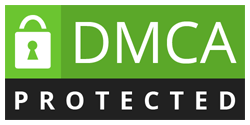solution
Six Sigma
Business process reengineering and continuous improvement efforts such as TQM and Six Sigma are both designed to improve efficiency, produce better product quality and greater customer satisfaction. The purpose for using operational improvement programs such as benchmarking, best practices, business process reengineering, TQM, and Six Sigma is to improve the performance of strategy critical activities and promote superior strategy execution.
Case:
Illustration Capsule 11.1 discusses Charleston Area Medical Center’s use of Six Sigma practices. Read the case below and answer the questions that follow.
Established in 1972, Charleston Area Medical Center (CAMC) is West Virginia’s largest health care provider in terms of beds, admissions, and revenues. In 2000, CAMC implemented a Six Sigma program to examine quality problems and standardize care processes. Performance improvement was important to CAMC’s management for a variety of strategic reasons, including competitive positioning and cost control.
The United States has been evolving toward a pay-for-performance structure, which rewards hospitals for providing quality care. CAMC has utilized its Six Sigma program to take advantage of these changes in the health care environment. For example, to improve its performance in acute myocardial infarction (AMI), CAMC applied a Six Sigma DMAIC (define-measure-analyze-improve-control) approach. Nursing staff members were educated on AMI care processes, performance targets were posted in nursing units, and adherence to the eight Hospital Quality Alliance (HQA) indicators of quality care for AMI patients was tracked. As a result of the program, CAMC improved its compliance with HQA-recommended treatment for AMI from 50 to 95 percent. Harvard researchers identified CAMC as one of the top-performing hospitals reporting comparable data.
Controlling cost has also been an important aspect of CAMC’s performance improvement initiatives due to local regulations. West Virginia is one of two states where medical services rates are set by state regulators. This forces CAMC to limit expenditures because the hospital cannot raise prices. CAMC first applied Six Sigma in an effort to control costs by managing the supply chain more effectively. The effort created a one-time $150,000 savings by working with vendors to remove outdated inventory. As a result of continuous improvement, a 2015 report stated that CAMC had achieved supply chain management savings of $12 million in the past four years.
Since CAMC introduced Six Sigma, over 100 quality improvement projects have been initiated. A key to CAMC’s success has been instilling a continuous improvement mind-set into the organization’s culture. Dale Wood, chief quality officer at CAMC, stated: “If you have people at the top who completely support and want these changes to occur, you can still fall flat on your face. . . . You need a group of networkers who can carry change across an organization.” Due to CAMC’s performance improvement culture, the hospital ranks high nationally in ratings for quality of care and patient safety, as reported on the Centers for Medicare and Medicaid Services (CMS) website.
Note: Developed with Robin A. Daley
Sources: CAMC website; Martha Hostetter, “Case Study: Improving Performance at Charleston Area Medical Center,” The Commonwealth Fund, November–December 2007, www.commonwealthfund.org/publications/newsletters/quality-matters/2007/november-december/case-study-improving-performance-at-charleston-area-medical-center (accessed January 2016); J. C. Simmons, “Using Six Sigma to Make a Difference in Health Care Quality,” The Quality Letter, April 2002.
- List three tangible benefits provided by the program.
- Explain why a commitment to quality control is particularly important in the hospital industry.
- How can the use of a Six Sigma program help medical providers survive and thrive in the current industry climate?
"Looking for a Similar Assignment? Get Expert Help at an Amazing Discount!"


